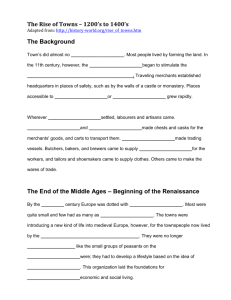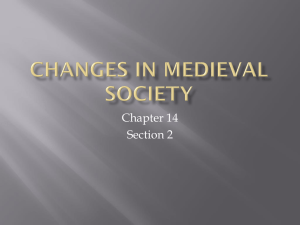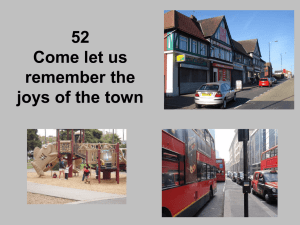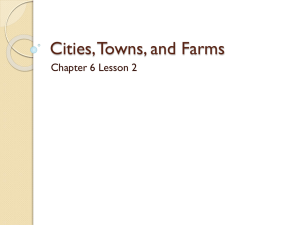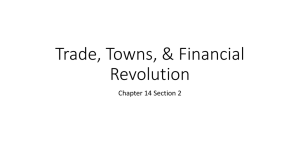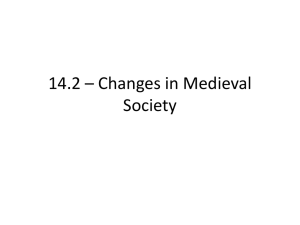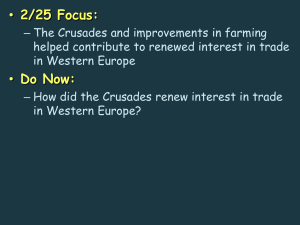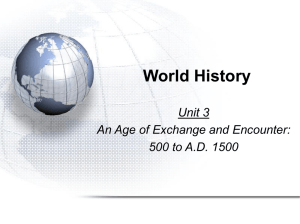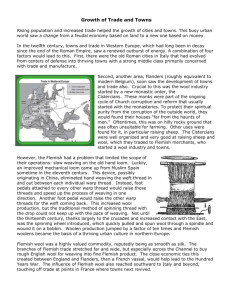Height of Medieval Civilization
advertisement
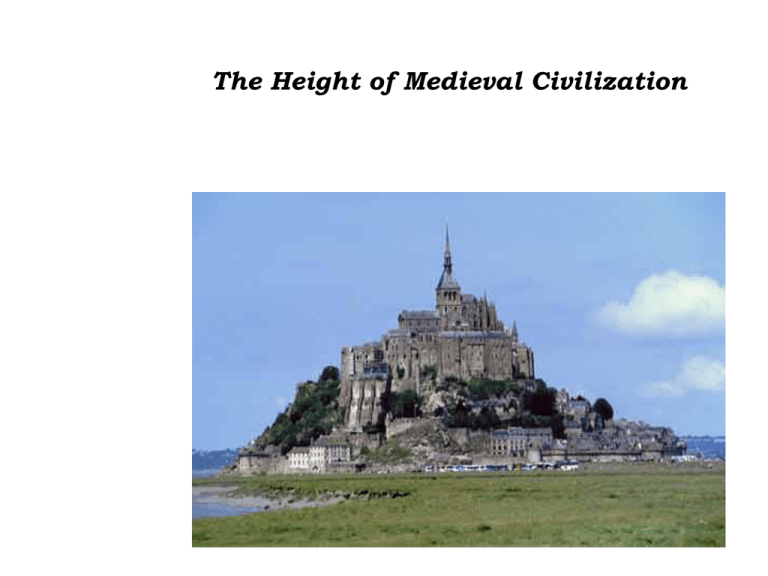
The Height of Medieval Civilization Growth of Towns • Warfare declined in western Europe during the 11th and 12th century • Manor economy became more productive • Population increased • Trade revived and towns increased in size • Peasants and nobles became aware of a larger world Where are the Towns? • During the early Middle Ages trade declined, small Roman towns remained – Vikings kept some trade links open between old towns – Many old roman roads were used for trade Revival of trade • • • Decline of feudal warfare Easier to trade using old Roman roads and rivers Wool was the main trade item. Towns became the collecting and distributing point for these items – – – English/Flemish…. sheep Antwerp and Bruges….weavers Milan and Florence…. trade cloth • Italian fleets gain control of the Mediterranean from the Muslims • During the Crusades trade expanded into the east. • Travel was expensive • Barter system was gradually replaced by a money economy. Trade Fairs and the Hanseatic League • Annual Trade fairs • (Champagne, France) • Nobles provided protection, rented booths, and hired money changers • Fairs became a magnet for goods and ideas • Trade fairs become elaborate events • Mixing place of customs, languages, and goods. • Gradual decline due to competition from the Hanseatic League, but also the rents were too high Hanseatic League Group of over 80 towns/cites fronting the Baltic. Dominate shipping lanes of Northern Europe Provided protection, made coinage, and treaties Lubeck: located on the southern shores of the Baltic Growth of Towns • Growth in trade, encouraged by the Trade Fairs helped Towns grow • Merchants stayed and opened inns for travellers • Bakers, shoemakers, carpenters and tailors settled in towns to provide needed goods and services • Rural peasants sold extra produce to townspeople • Towns specialize, Flanders produces wool, other lace or leather. Chartering a Town • Towns located on lands already owned by lords or the church • Fees paid to lord or church • As towns grew they demanded charters or their rights guaranteed • Charter gave towns control over their own affairs: taxes, property,courts, and grant freedom to serfs • Population of towns consisted of serf, peasants merchants, artisans • Townspeople called bourgeoisie (Fr.) burgesses (Eng.) burghers (Ger.) Medieval Guilds • Merchants and artisans given the right to form associations • Governed prices, wages, standards, disputes and imports/exports • Only guild members could practice their trade. Hamburg Guild Practices • Protected members • ‘Just Price’ for goods • Set work week, hours, pay • Social welfare programs • Entertainment and religious feasts • Training ; apprentice, journeyman and master craftsman. • Could take 7 to 20 years • Guilds prevented competition • Passed down through the family Town Life • Many towns with few residents • Walled, gated • Town centre with church, town hall, market, • Guild quarters • Waste, poor sanitation system • Fires a problem • Epidemics • What’s good about towns? • Ideas, could make money, entertainment

